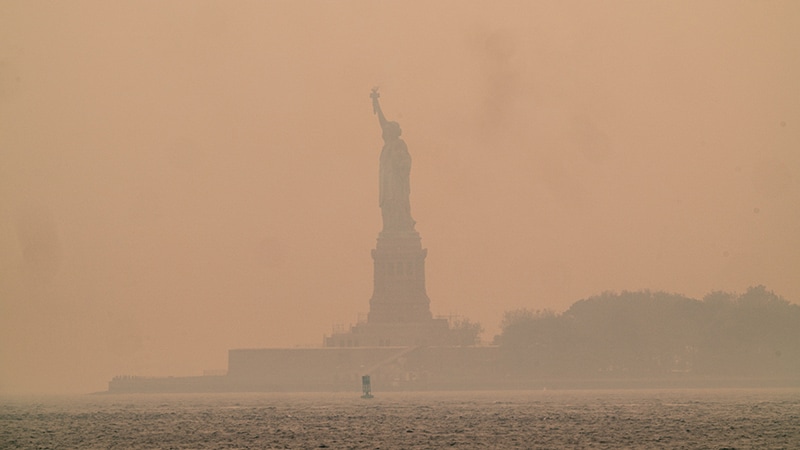Canadian Wildfire Smoke Increases Asthma-Related ED Visits in New York
Core Concepts
Canadian wildfire smoke in New York led to a significant rise in asthma-related emergency department visits.
Abstract
The study conducted in New York City between June 6 and June 8, 2023, analyzed the impact of Canadian wildfire smoke on asthma-related emergency department (ED) visits. Here are the key highlights and insights from the content:
Study suggests a notable increase in ED visits related to asthma syndrome during the 3-day smoke wave.
Asthma syndrome ED visits peaked on June 7 during the smoke wave.
Daily mean PM 2.5 levels significantly rose during the smoke wave compared to reference periods.
The number of asthma syndrome ED visits increased during the smoke wave across all age groups.
All boroughs in New York City reported an increase in asthma syndrome ED visits during the smoke wave.
Previous studies indicate that wildfire-specific PM 2.5 may be more toxic than other forms of PM 2.5.
Experts emphasize the need for action to address the impact of wildfire smoke on respiratory health.
Canadian Wildfire Smoke Linked to ED Visits in New York
Stats
The number of asthma syndrome ED visits increased to 261 per day during the 3-day smoke wave compared with 181.5 per day during reference periods.
Daily mean PM 2.5 levels reached 100.9 μg/m3 during the smoke wave compared to 9.0 μg/m3 in reference periods.
The incidence rate ratio (IRR) for asthma syndrome ED visits during the smoke wave was 1.44.
Quotes
"Wildfire smoke is no longer a West Coast issue here in the United States." - Kai Chen
"This summer, we have seen firsthand evidence of extreme weather events happening across the world, including those that traditionally would have been unthinkable." - Kai Chen
"A silver lining of the bad air quality due to wildfire smoke in the East Coast and Midwest during June is that it should serve as a wake-up call to those who thought wildfires were only a problem in the Mountain West." - John Balmes, MD
Key Insights Distilled From
by Kate Johnson at www.medscape.com 10-20-2023
https://www.medscape.com/viewarticle/997578
Deeper Inquiries
How can cities prepare to mitigate the health impacts of distant wildfire smoke?
Cities can prepare to mitigate the health impacts of distant wildfire smoke by implementing air quality monitoring systems to track particulate matter levels, issuing public health advisories when air quality is poor, providing access to clean indoor air spaces, distributing masks to vulnerable populations, and developing emergency response plans for when air quality reaches hazardous levels. Additionally, cities can work on reducing overall air pollution through policies that promote clean energy sources and sustainable transportation options.
What are the potential long-term effects of increased exposure to wildfire smoke on respiratory health?
Increased exposure to wildfire smoke can have potential long-term effects on respiratory health, including the development or exacerbation of chronic respiratory conditions such as asthma, chronic obstructive pulmonary disease (COPD), and bronchitis. Prolonged exposure to wildfire smoke can also lead to decreased lung function, increased risk of respiratory infections, and long-term inflammation in the respiratory system. Furthermore, exposure to wildfire smoke has been linked to an increased risk of cardiovascular diseases and other systemic health effects.
How can public awareness and policy changes help address the growing threat of wildfires and their impact on air quality?
Public awareness campaigns can help educate individuals about the health risks associated with wildfire smoke exposure and provide guidance on how to protect themselves during poor air quality events. Policy changes at the local, state, and national levels can help address the growing threat of wildfires and their impact on air quality by implementing regulations to reduce greenhouse gas emissions, promoting sustainable land management practices to prevent wildfires, investing in wildfire prevention and firefighting resources, and supporting research on the health effects of wildfire smoke exposure. Additionally, policies that prioritize climate change mitigation and adaptation strategies can help reduce the frequency and intensity of wildfires in the long run.
0
